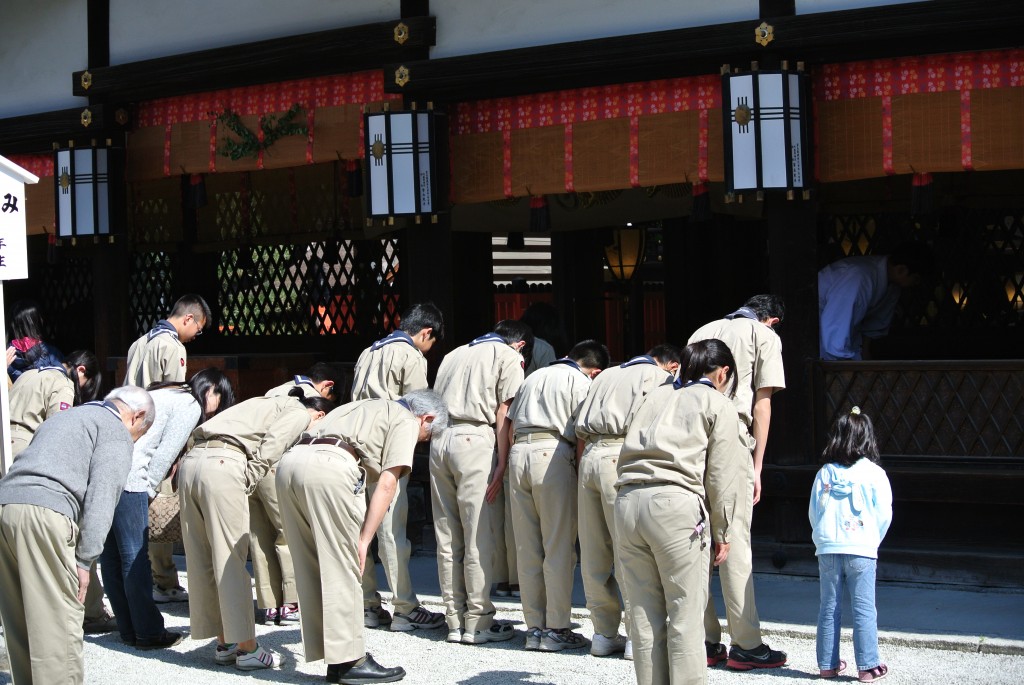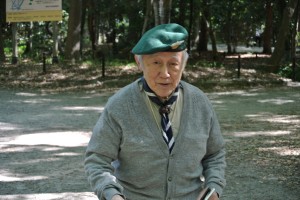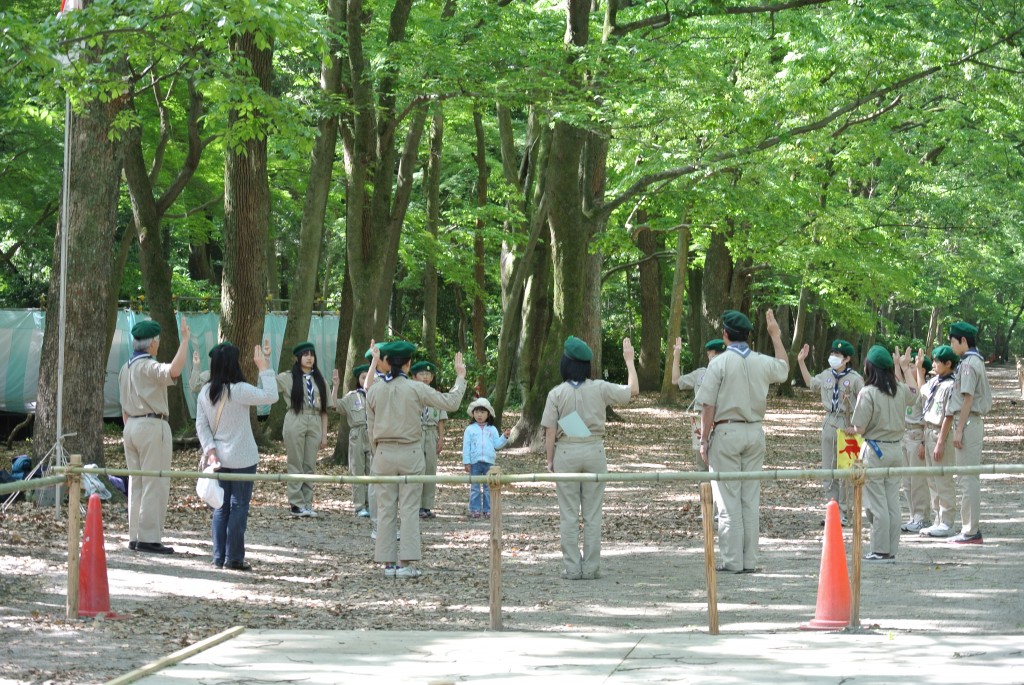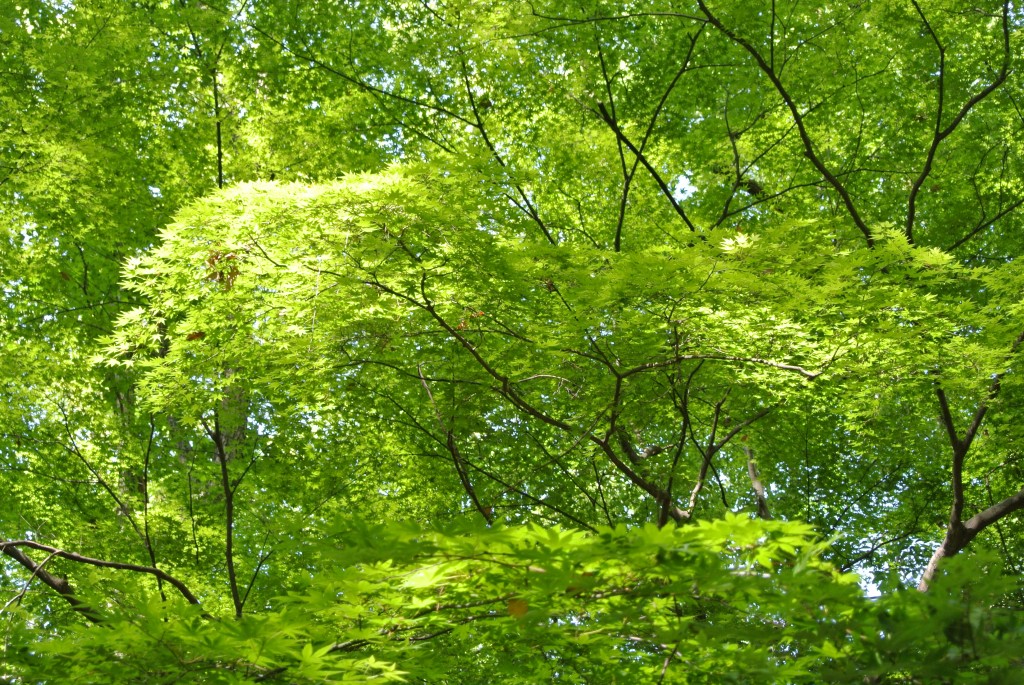
Scouts at prayer to the Shimogamo kami
Scouts are something one associates with Christianity. That was certainly Baden-Powell’s intention when he founded the boy scout movement in 1907 in the UK. But on an early morning visit to Shimogamo Jinja I came across a Shinto scout group attached to the shrine, and fell into conversation with their honorary chief leader, Toju Takabayashi, now 83 years old.

Toju Takabayashi, aged 83 and still a scout leader
Takabayashi san told me that the first Shinto scout group had been set up in Tokyo in 1950 and that there were now about 80 groups attached to shrines throughout Japan. They belong to the wider Japanese scout movement, which meets nationally once a year, but they have their own Conference of Shrine-related Scouts who meet once every five years. The last meeting was at Ise.
When I came across the group, they were at morning prayers. This consisted of lining up before the haiden and reciting a prayer, then clapping and bowing in unison. Afterwards they gathered in a circle in the Tadasu no mori woods where they had a talk about what they would do for the day. One of the first things they did was to raise the hinomaru flag.
There are about fifty members in all, Takabayashi san said, much fewer than in the past. They did various activities like singing, dancing, tying knots, and helping with maintenance of the woods. it was important for children to develop their own character, he stressed, not to learn ideas from above. One should listen to the kami in one’s heart, he went on, not the one being marketed by the shrine. Hoping for genze riyaku (worldly benefits) is not good; human to human communication and world peace was what mattered.
It was hardly the orthodox Shinto message that I had expected. Shimogamo after all is a bastion of the emperor system, and in two days’ time will be accepting gifts from an imperial messenger at the Aoi Festival. But how heartening to find someone with an independent mind in such surroundings, open to listening to the voice of nature. It turned my morning walk into a journey of joy.

Scout's honour

Sacred grove in the early morning light. 'Let nature be your teacher,' said Wordsworth.

Leave a Reply